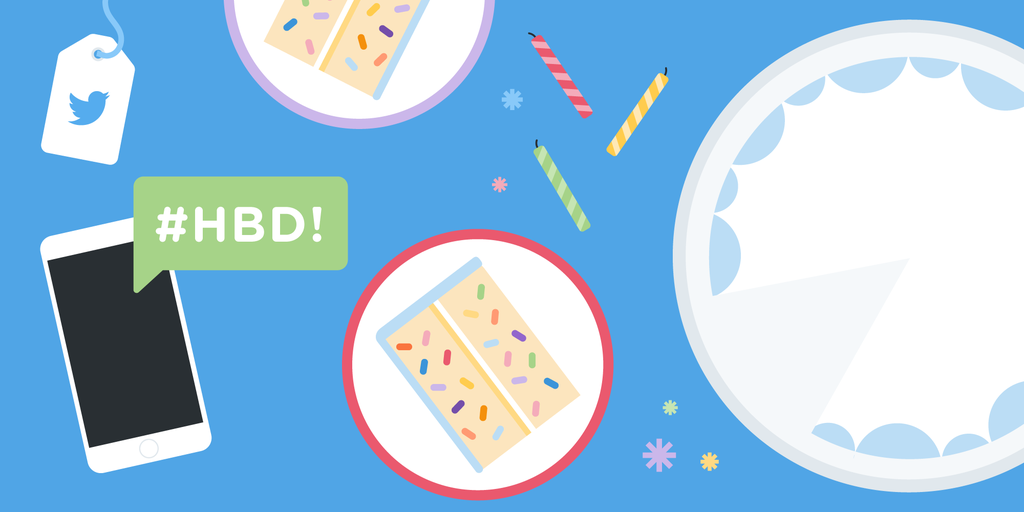Congratulations, Twitter! You’ve made it 10 years without being overshadowed or forced out of what’s popular.
In the social media world, platforms are constantly emerging, changing and disappearing. To be among the top networks requires skilled adaptation, cutting edge creativity and the perception among users that it gives something no other network can or does.
Over the last 10 years, hundreds of different social media apps and services have emerged – some successfully, others not so much. The following timeline outlines the launch years of more popular networks, showing just where Twitter falls in the mix.
Xanga – 1999
Linkedin – 2003
Myspace – 2003
Facebook – 2004 (open to all in 2006)
Twitter – 2006
Tumblr – 2007
We Heart It – 2008
Foursquare – 2009
Instagram – 2010
Pinterest – 2011
Google+ – 2011
Snapchat – 2011
From the very beginning, Twitter’s approach and understanding of how we want to consume content resonated with the multitudes and pop culture is forever changed. Here are 10 ways the platform impacted social media in the last 10 years:
1. Hashtags
Originally intended as a way to organize conversations, the hashtag has become part of a lifestyle that revolves around social media. It allows users to follow trends, create their own or add humor. Newlyweds use it to create funny and unique tags for wedding photos with friends, brands use it to track engagement with audiences, etc. The hashtag became a cross-platform phenomenon, but it originated on Twitter.
2. Retweets
Sharing other people’s tweets through the retweet feature on Twitter moved tweets from one user’s timeline to reach other followers through sharing. The feature allowed for Quote Tweets that allowed users to talk about what they’re retweeting. This lingo has also infiltrated everyday conversation as a form of support or agreement.
3. Brevity
Twitter didn’t reinvent the art of being brief, but it definitely capitalized on it. Twitter has rammed home the point that you can communicate in 140 characters or less though some users still tweet various times in a row to get one message across. These condensed messages moved focus from having the most information to communicating the most important information.
4. Live Tweeting
When it comes to events, television shows, movies and the like, users go to Twitter to express their feelings throughout the ordeal. This live-tweeting culture has created a community of constant interaction with a topic in real time as people discuss their enjoyment, frustration, support and other feelings toward a common event.
5. Spoof Accounts
The speed with which spoof Twitter accounts are set up in reaction to unfolding events is impressive. Twitter is filled with parody accounts, from Not Mark Zuckerberg and Pharrell’s Hat to Left Shark and Donald Drumpf’s hair. These parody accounts add a layer of comedy and connection to the Twitter community.
6. Widespread Hoaxes and Information Sharing
Thanks to the social media platform’s reach, news can reach around the world in a matter of minutes – even if it’s a hoax. Cher’s premature death notice was more misunderstanding than hoax thanks to the #nowthatchersdead hashtag that started after the death of Margaret Thatcher. Morgan Freeman, Tom Hanks, Jeff Goldblum, even Justin Bieber have all had their fake deaths announced on Twitter. On the flip side of hoaxes, however, the far reach in short amounts of time also allow for a great outpour of support. For instance, Caitlyn Jenner’s ability to gains over 1 million followers in 3 hours, the support for those in Paris during the bombings, widespread grieving for Robin Williams, etc.
7. Brand Engagement
Twitter has given brands a platform for interaction, engagement and community with their audiences. As users use the platform to talk about their experiences in real time, brands have been given the unique opportunity to talk back immediately. Users also retweet brands, get involved in their polls and hashtags and tag brands when they interact with them. All of these lead to better communication between brands and audiences.
8. Polls
The launch of Twitter polls has proven to gain a lot of positive response by users. The short, up to four option polls allow for users to get a small idea of support for certain topics and create different discussions with their followers.
9. Twitter Moments
Packaging live moments from around the world within Moments has allowed for storytelling depth on Twitter that is more engaging and informative in one cohesive space. Moments give users the ability to figure out what is trending in each topic without the disruption of other unrelated messages on their timeline.
10. GIFs, GIFs and more GIFs
Among the newer additions to Twitter is the GIF Search capability. Integrating GIFs into the platform has lead to higher engagement and expressions by users and brands alike. The additional aspect of searching in one place to fully communicate an idea has given the Twitter community various options of how they want to communicate their current emotions.
Photo from Twitter

